California builds 'Noah's Ark' as extinction looms - Los Angeles Times
It was just before sunrise in July when the botanists Naomi Fraga and Maria Jesus threw on backpacks and crunched their way across a brittle alkaline flat in the hottest corner of the Mojave Desert. Their mission: to rescue a tiny plant teetering on the brink of extinction.
A decade ago, the Amargosa River Basin east of Death Valley National Park was a vast muddy wetlands studded with millions of Amargosa niterwort, a fleshy herb that grows only here and that scientists call Nitrophila mohavensis.
Today, the species has dwindled to fewer than 150,000, and most of the plants that still sprout from this salt-white playa have stopped producing viable seeds — stressed victims of decreasing rainfall, rising temperatures and the loss of groundwater due to pumping.
The botanists aimed to collect seeds until the temperature hit triple digits. Later, their bounty would be sealed inside aluminum foil packets for storage in California Seed Bank freezers at the nonprofit California Botanic Garden in Claremont.
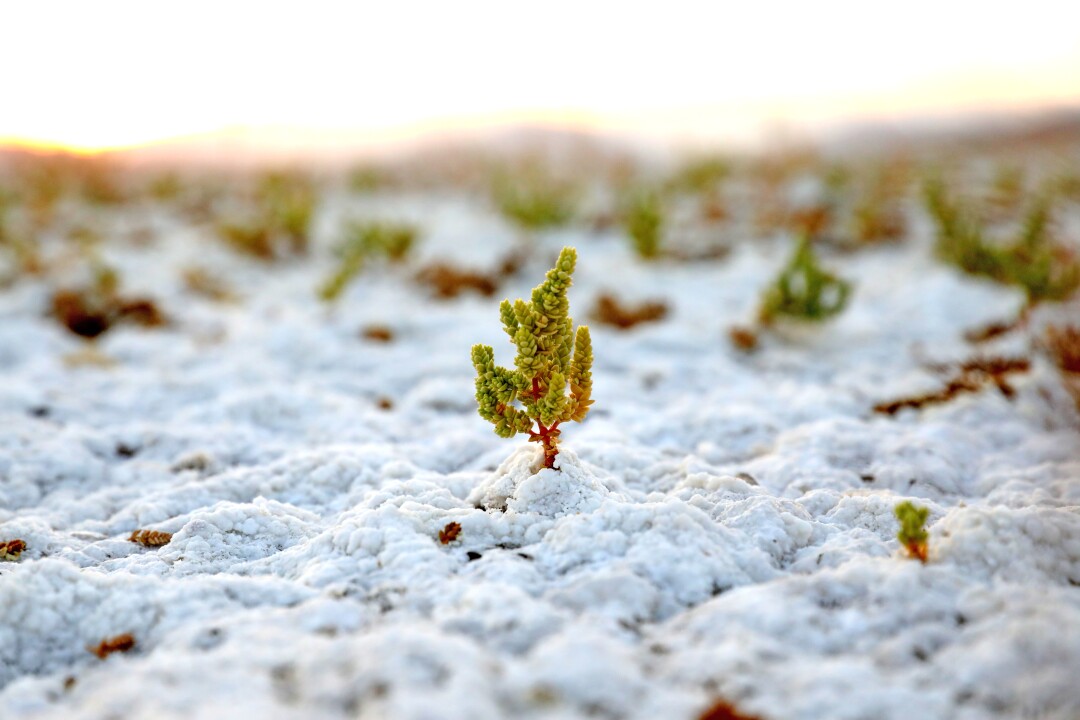
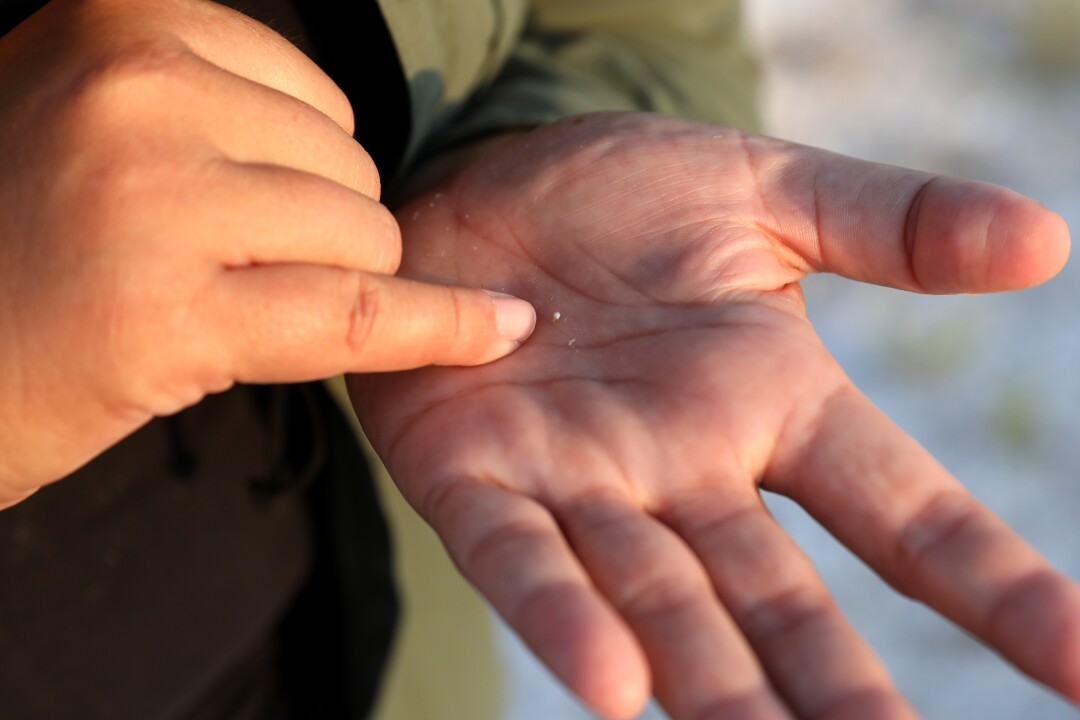
"Oh, man, I've never seen it so dry here before," said Fraga, 42, director of conservation programs at the botanic garden. "Not all that long ago we would have been slipping and sliding around in mud," she said.
Surrounding Fraga were shallow holes that had been dug by wildlife clawing desperately for food and water. "We'll be lucky to find a single seed this morning," she said.
The conditions under which Fraga and Jesus, 37, a conservationist at the botanic garden, were working said a lot about their spirit and commitment to salvaging even the most obscure flora whose natural cycles have fallen out of sync due to climate change.
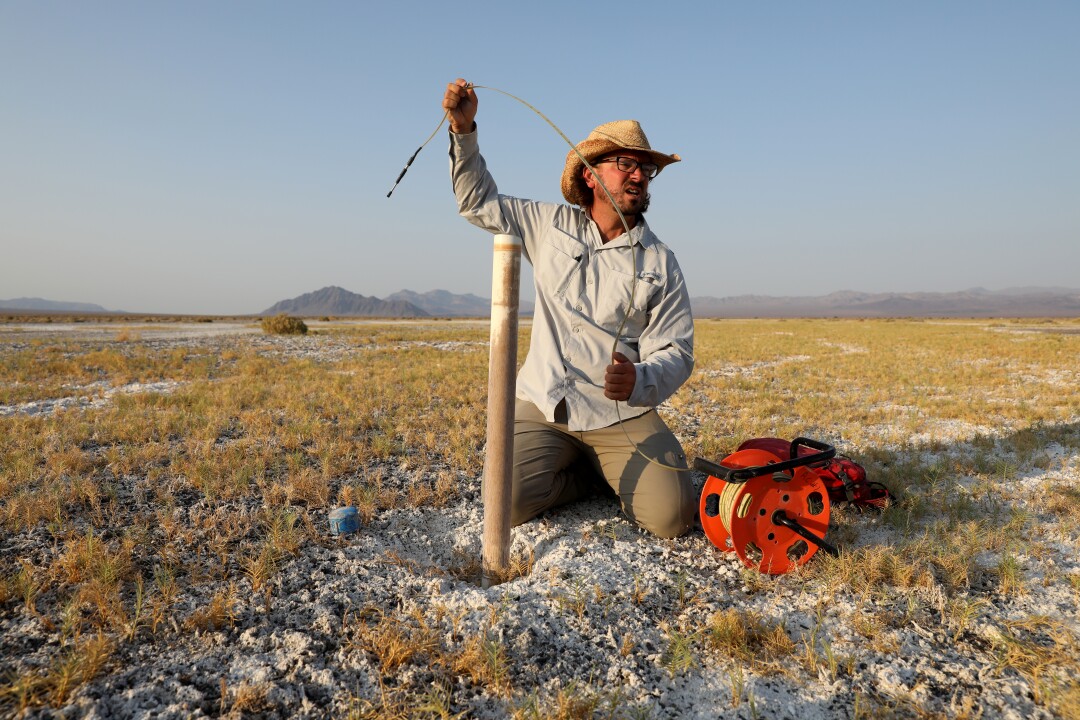
In four previous expeditions here, Fraga had collected a total 133 niterwort seeds. "Eventually, we'd like to have 3,000 of their seeds in the bank," she said. "That would ensure enough on hand for restoration efforts if the plant has gone extinct in the wild."
The recent survey left her doubtful however.
"The speed at which this desert is drying up makes me want to cry," she said.
* * *
Globally, more than a million plants and animals face extinction due to habitat loss, climate change and other factors related to human activity, and this alarming loss of biodiversity is only accelerating. In California, conservationists and biologists have identified scores of species in potential peril, including many icons of the state's beloved wildlands — chinook salmon, giant sequoias, Joshua trees, desert tortoises, California red-legged frogs, gray whales.
Now, a hellish summer of extreme fire activity, drought and heat are again pushing some species to the brink of oblivion. Seized by a newfound urgency, state and federal biologists, research institutions, conservation organizations and zoos have been racing to save the most threatened species with a bold campaign of emergency translocations, captive breeding programs and seed banks. Some have likened the effort to a modern-day Noah's Ark.
"I can't think of a single terrestrial ecosystem that's not being stressed to the limits of its physiological tolerance right now," said Dan Cooper, a consulting biologist and expert on the plants and animals of Los Angeles County.

Politics
As U.N. warns of widespread extinction, California is already losing species
A new United Nations report warning of a global extinction crisis identifies three parts of the world in particular danger: South America, Africa and parts of Asia.
Several all-out rescue efforts are taking place across the Amargosa River area, a region of eerily flat arid vistas, isolated oases, streams and rugged mountain ranges between Death Valley National Park and Mojave National Preserve. It is home to 61 endemic species, including four species of cave-dwelling insects that feed on crickets and scorpions that tumble down into their dark lairs from above.
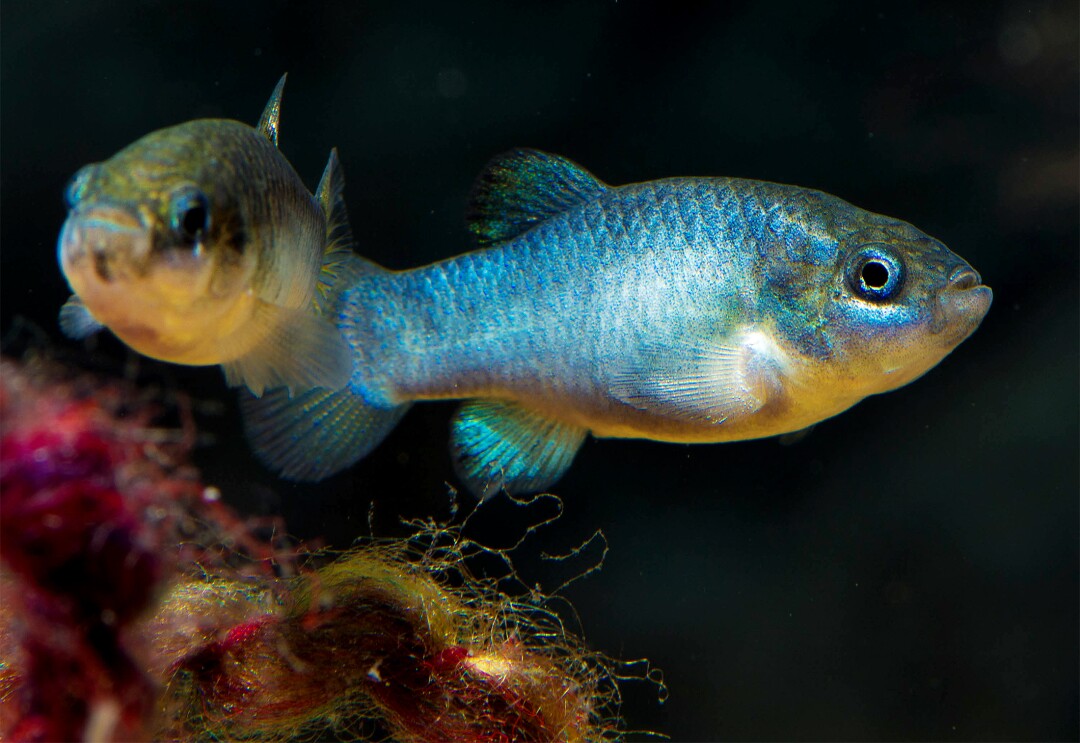
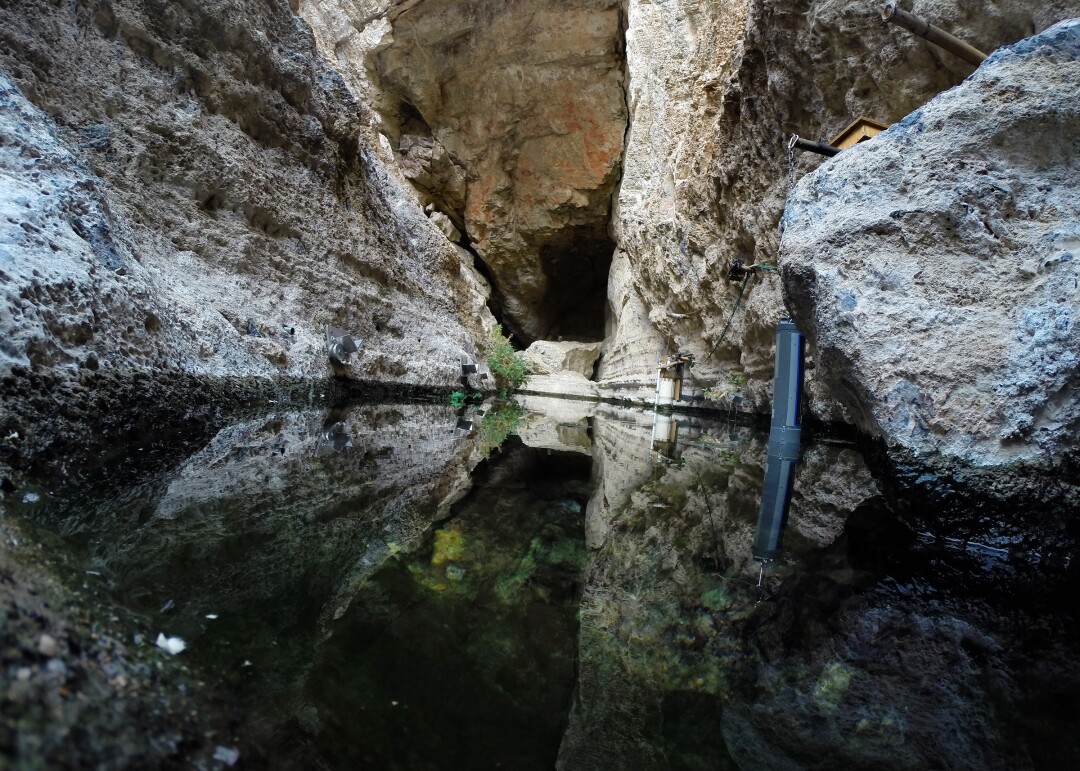
At the Ash Meadows Fish Conservation Facility in Amargosa Valley, Nev., about 20 miles northeast of the Amargosa niterwort's stronghold, scientists have established a captive colony of Devil's Hole pupfish — the rarest fish on Earth — in a $4.5-million, 100,000-gallon tank built as a fiberglass replica of a nearby natural rock tub in Death Valley National Park, where the species has existed since the Ice Age.
The geothermally heated water at Devil's Hole has been a constant 93 degrees Fahrenheit, which is the upper physiological limit for the inch-long fish, which is regarded as a symbol of the desert conservation movement. But average ambient temperatures in the region have risen by about three degrees and a study by Mark Hausner, a research biologist at the Desert Research Institute in Reno, warns that another degree or two higher could destroy the Devil's Hole pupfish's reproduction and egg development.
Subscribers get early access to this story
We're offering L.A. Times subscribers first access to our best journalism. Thank you for your support.
Meanwhile, a captive breeding program at UC Davis for the federally endangered Amargosa vole has improved the recovery outlook for that small mammal, only a few hundred of which cling to existence in their shrinking native wetlands east of Death Valley National Park.
Hoping to increase the vole's odds of survival, several were captured and released into newly restored spring-fed marshes in nearby Shoshone Village, population 17, just south of the park. The wetlands also support Shoshone pupfish, a species that was considered extinct in the 1960s, but was rediscovered in the springs' outflow in 1986.
Looking ahead, Susan Sorrels, who was born and raised in Shoshone, is among a group of conservationists campaigning to have the entire Amargosa Basin designated a national monument. "We envision stewarding an ecosystem," she said, "where visitors to the region will be able to enjoy the stark and unspoiled beauty of this desert for generations to come."
* * *

Time may have already run out for California's most infamous fish, the 3-inch delta smelt. Experts say the fish may have disappeared from its only natural home, the Sacramento-San Joaquin Delta.
Despite a decades-long rescue effort, the delta smelt was a victim of unusually warm water temperatures combined with regulations that vexed agricultural interests and water districts and placed it squarely in the center of California's worsening water wars.
Now, scientists say, the only places the once-abundant species still thrives is in the confines of artificial tanks at the captive breeding program at UC Davis' Fish Conservation and Culture Laboratory, and in an exhibit at the Aquarium of the Pacific in Long Beach.

UC Davis is currently preparing to take a diminutive cousin of the delta smelt into captivity, the state threatened longfin smelt. The longfin smelt, too, has seen its population plummet over the past two decades due to a rapid decline in the environmental health of the state's biggest estuary.
In Southern California, the largest known populations of the Pacific pocket mouse — the smallest mouse in North America — inhabit a captive breeding effort at the San Diego Zoo and a portion of the Crucible training grounds adjacent to a Marine firing range and bivouacking area at Camp Pendleton near San Diego.
Elsewhere, the Los Angeles Zoo is performing what some call miracle work by keeping alive populations of federally endangered southern mountain yellow-legged frogs, one of the rarest amphibians on Earth. Nonnative trout, fungal disease, wildfires, extreme weather and hotter stream temperatures linked to climate change have decimated the species that once thrived in the high mountains that surround Los Angeles.
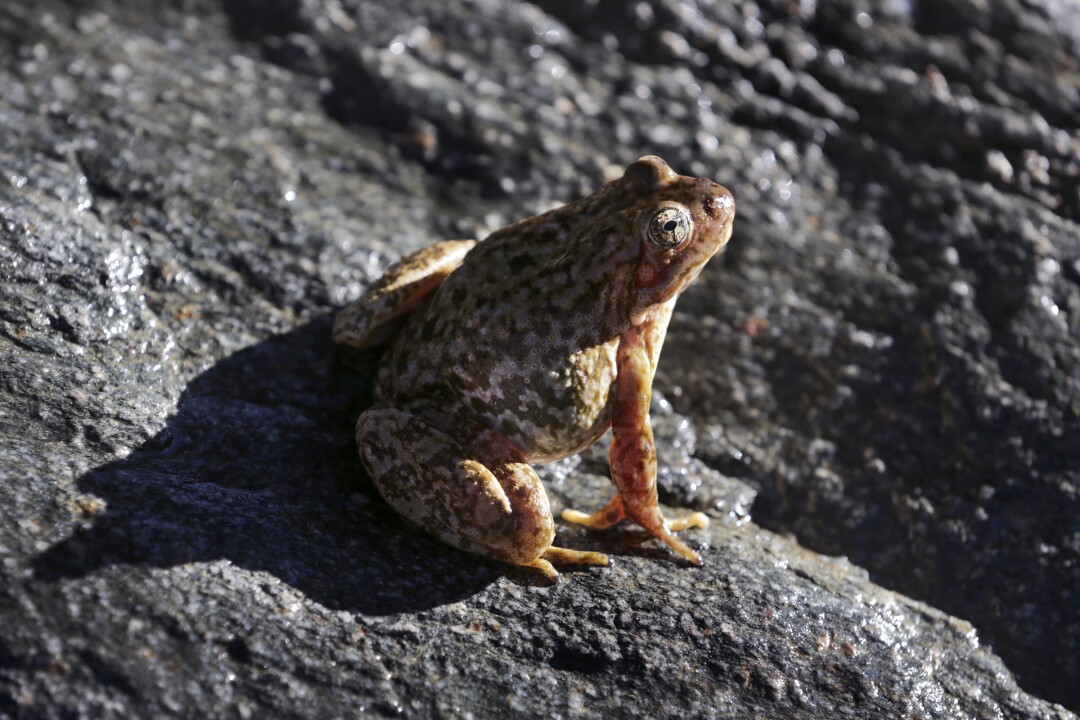
About 10 miles to the south, a weedy field overlooking an industrialized stretch of the Los Angeles River in South Gate is currently being transformed into a shady 300-foot recirculating stream for rearing rare native rainbow trout and arroyo chubs — a California species that adapted easily to most conditions, except for extreme drought, mudslides and urban development.
Watching western monarch butterflies flutter into extinction remains a disturbing possibility. Only an estimated 1,914 monarch butterflies wintered on the California coast over the past year — the lowest number ever recorded and an indication that climate change and pesticide use are disrupting flowering seasons in stands of milkweed and wildflowers needed to complete their migration to central Mexico.
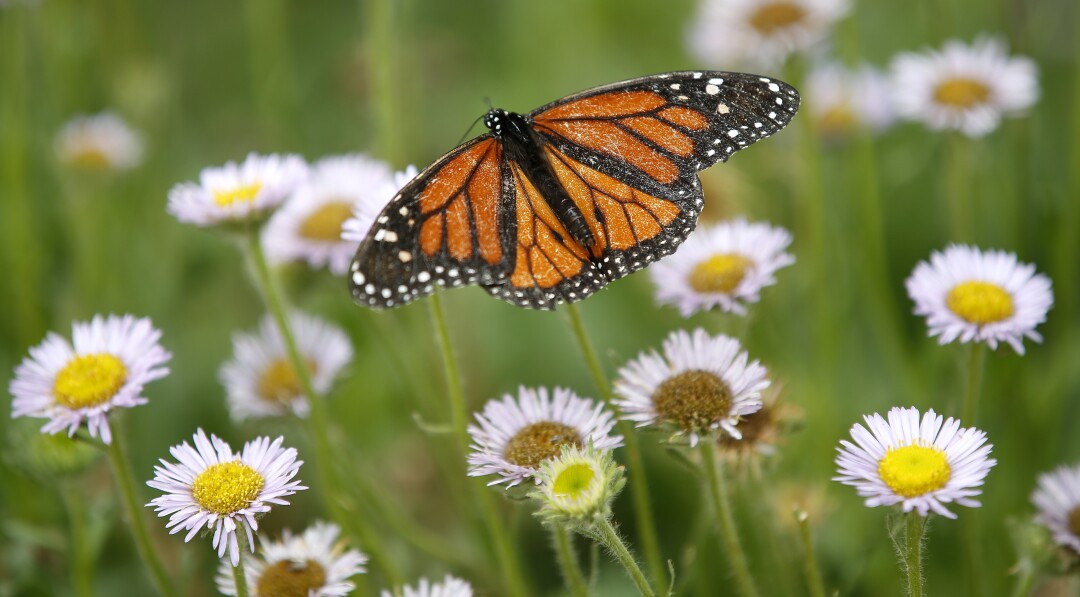
Now, the Center for Biological Diversity is calling on Interior Secretary Deb Haaland to immediately use her emergency authority under the Endangered Species Act to designate all or portions of the 36 national wildlife refuges in California as pesticide-free monarch safety zones and provide funding for massive plantings of milkweed and nectar plants.
Separately, a coalition of environmental groups led by the nonprofit River Partners and the state Wildlife Conservation Board is restoring over 30,000 milkweed plants at eight sites from Oroville Dam in the Sierra Nevada foothills east of Sacramento south to the Hollenbeck Canyon Wildlife Area just east of San Diego.
"Monarchs are wedded to waterways," said Julie Rentner, president of River Partners, "so, when California and the West get hit with tough droughts and prolonged, record-breaking heat waves, monarch populations suffer big time. We are pulling all the actionable levers we can to save this iconic species from an avoidable demise."
Then there is the California Botanic Garden, which is trying to build seed banks of the rarest plants in the state. As part of that initiative, it has installed additional seed bank freezers equipped with emergency backup generators and has seismically upgraded the building that houses them.
"So far, we've gathered seeds from about 20% of the state's rarest plants," Fraga said. "But the heartbreaking reality is that some plants won't be able to survive another year as dry as this one. We went out this spring and couldn't find a single flower with viable seeds anywhere in the Mojave Desert."
Nick Jensen, Southern California conservation analyst with the California Native Plant Society, was not surprised. "For many plant species in the desert, it's boom or bust," he said. "They germinate while it's moist, grow in the spring and, if conditions are right, they flower and generate seeds.
"But they just won't open their doors for business in a real dry year like this one."
* * *
